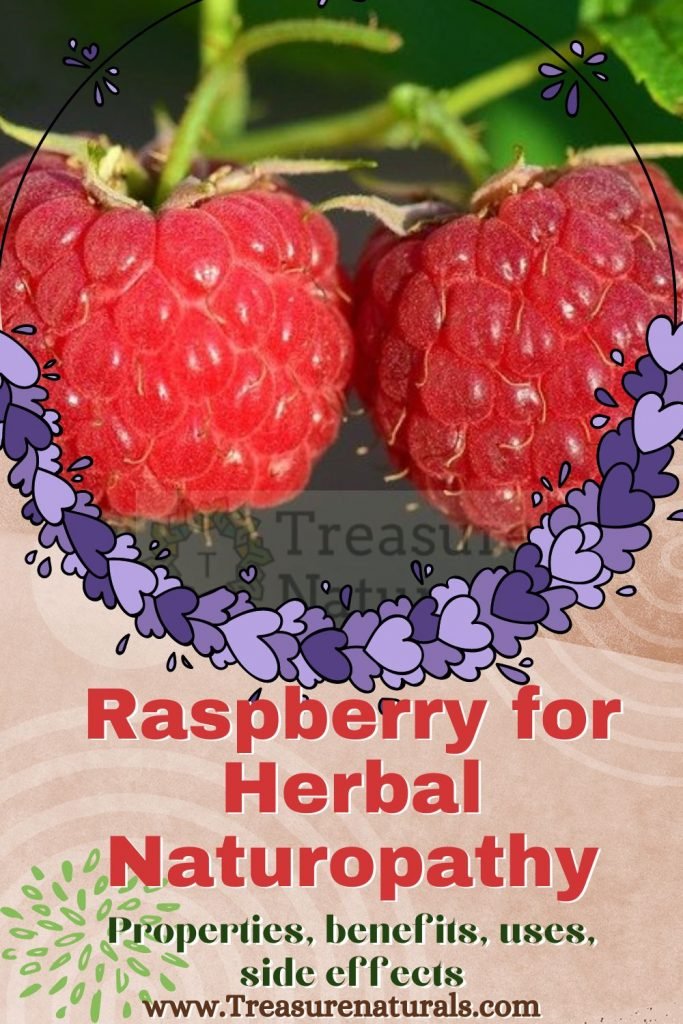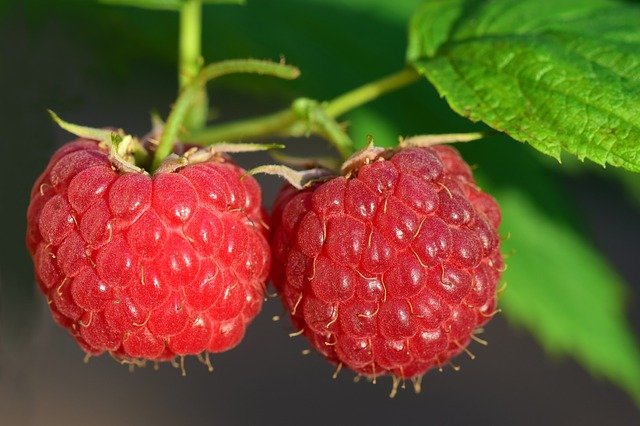
Raspberry ( Rubus idaeus ) is a plant of the Rosaceae family useful for circulation, purifying the blood and soothing gastrointestinal disorders. Let’s find out better.
Properties of raspberry
Raspberry fruits when eaten fresh as table fruit provide the body with excellent amounts of vitamins A and C of citric acid, pectin and fructose. Beyond the alimentary use from which an antioxidant action is obtained , raspberry is also one of the most used phytotherapeutic drugs.
The leaves contain flavonoids (rutin) and are indicated, in the form of infusions or decoctions, in the treatment of water retention, for their diuretic properties; thanks to the presence of tannins it is recommended to use it in case of diarrhea, as they exert an astringent action; while for their anti-inflammatory properties, raspberry leaves are used in the presence of stomatitis and intestinal inflammatory states.
The glycerine macerate, or bud extract , obtained from the buds, acts on the female hormonal system. It is, in fact, a regulator of the hypothalamic-pituitary-gonadal axis and of ovarian secretion, which is used in all the disendocrinies of the sexual sphere of women and in any need for regularization of the menstrual cycle .
Its intake is therefore indicated in premenstrual syndrome associated with breast tension, anxiety , nervousness, water retention, acne , because it has a rebalancing action on the autonomic system. The antispasmodic and decongestant properties find excellent use in the treatment of dysmenorrhea , that is painful menstruation, due to its ability to calm uterine spasms.
As a rebalancer of the female hormonal system it is also indicated in case of amenorrhea, that is the lack of menstruation, and in the irregularities of the menstrual cycle, including pubertal delays of the menarche; in the treatment of ovarian cysts, polycystic ovary, and fibroids. Finally, it is recommended for all the ailments that accompany the period of menopause such as cycle irregularities, hot flashes, mood swings and depression.
How to use
INFUSION : 1 level spoon of raspberry leaves, 1 cup of water
Pour the leaves into the boiling water and turn off the heat. Cover and leave to infuse for 10 min. Filter the infusion and drink it between meals to take advantage of the diuretic action; when needed in case of diarrhea; use it as a gargle lotion in case of stomatitis and sore throat.
The glycerin macerate of the buds : 40-50 gc in mid-morning and 40-50 gc in mid-afternoon, away from meals, due to its properties on the female hormonal system.
Contraindications of raspberry
Raspberries are to be avoided in case of gout or kidney problems because they contain oxalic acid.
In addition, it can interact with iron-based drugs, limiting their absorption. In case of pregnancy and breastfeeding, raspberry is well tolerated but it is always good to consult the gynecologist before resorting to herbal remedies.
Description of the plant
Thorny shrub with stoloniferous stock with biennial shoots. The stem (up to 2 m.) Is greenish blue, woody, erect and with thin and reddish thorny quills.
The leaves are deep green on the upper page, and white and hairy on the lower one, with toothed or serrated margins, full of veins, rounded at the base and pointed at the tip.
The flowers, solitary or gathered in small clusters, are white sometimes spotted with pink. The fruits are pendulous, formed by a set of fleshy drupes and containing a small red or white seed, joined together .
The habitat of the raspberry
The raspberry grows spontaneously at the edge of the mountainous woods, along the banks of the streams, preferably in the hilly areas and in the pastures up to 2000 meters above sea level. Rather common in Europe and temperate Asia and North America, raspberry is grown in several mild climate regions.
Background

The use of raspberries as an edible fruit dates back to very ancient times, and it is certain that the Greeks and Romans ate them with “great delight”. The scientific name Rubus idaeus translates the ancient name of ” bramble of Mount Ida “.
Raspberries are very popular for the preparation of jams, syrups and from them we also obtain the well-known liqueur called “ratafia“. In folk medicine these fruits were used for their relaxing action on the nervous system.
At one time the fruits of these plants were also used to perfume wine and are still used to flavor drinks, liqueurs, and syrups .






